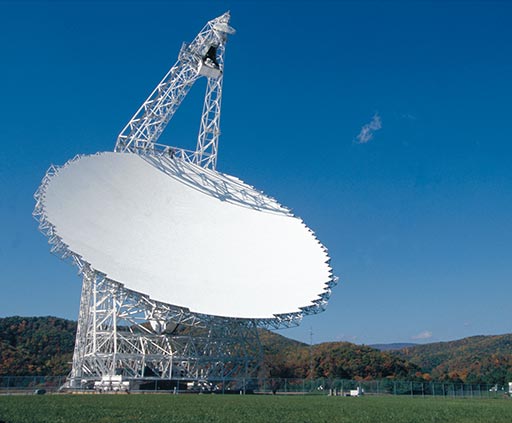In this modern age, we are all used to using WiFi to browse the internet, online shop, or post a new picture to social media. It’s become so integrated into our lives it’s like second nature; however, there are places close by that live a completely different life. Welcome to Green Bank, West Virginia, home of the world’s largest radio telescope. Astronomers use this telescope to look at deep parts in the sky, advancing our cosmic knowledge and hopefully find signs of extraterrestrial life. Green Bank lies smack dab in the middle of the National Radio Quiet Zone (NRQZ), which was established by the Federal Communications Commission (FCC) and the Interdepartment Radio Advisory Committee (IRAC) to minimize interference received by the telescopes. Basically, people living in this area must agree not to use WiFi. Say goodbye to bluetooth, microwave ovens, remote control toys, etc. How do people do it? Well, it’s not as bad as it sounds. For one, browsing the internet is allowed, but one must use an ethernet cable to do so. Residents can use landlines to call each other.

I actually got the chance to go to the Green Bank Observatory, and it was every bit as interesting as I thought it would be. Obviously, my phone didn’t work, but there was a computer lab in the science center… surrounded by a Faraday cage. A Faraday cage is an enclosed space that blocks electromagnetic signals, which is why it was safe to browse the internet within this space. The point of my trip wasn’t just to go on the computer inside a Faraday cage, it was actually to use a telescope! I got the chance to use the forty-meter educational telescope, and learned how to use and interpret that data. The telescope could only change its declination, which is the vertical direction. The other direction, called right ascension, would depend on the time of day. There was a list of objects in the night sky, and using the telescope, we were able to track these celestial objects in the night sky. Galaxies, nebulas, star clusters, etc. were all able to be observed with the telescope. I also got a change to go and see the actual Green Bank Telescope up close, but didn’t get a change to use it. Going to Green Bank was a really special experience, and even though I didn’t get to use my phone, I would definitely go again!

When I was in Puerto Rico I went to the world’s largest radio telescope called Arecibo Radio Observatory and it was unimaginable of how large the distance it can pick up frequencies from. My favorite part of this is that the radio tower sends signals and sometimes the signals return the same pattern it had been sent which puzzles scientists of terrestrial life on other planets. Living in a zone like that would have its challenges, however, it may come with some unseen benefits that we do not understand due to the overwhelming technology in our world.
This blog post was so intriguing to read! You can really witness the passion you hold for the topics you write about in your blog. I enjoy how you started the post with something that everyone can relate to like using WiFi and then proceeded to describe your personal experience. The language and the style of writing you use within your blog is very easy to comprehend as reader. Awesome job!
I really enjoyed getting to read about your experience at Green Bank! I have actually traveled to West Virginia numerous times and was aware of the NRQZ, but I have never been there myself, let alone heard of anyone who has been inside. It’s fascinating to hear about how different the lives of the people in the area are, but as long as they know what they are getting into, I think it’s a neat way to live. It is also super cool that you got to use the forty-meter telescope and see how to interpret real data. I think it is so intriguing how we have the technology to see galaxies, star clusters, and other phenomenal sites in outer space, and it truly blows my mind to think that we can see them with such clarity. I hope that you get the chance to go back and use the Green Bank Telescope someday!